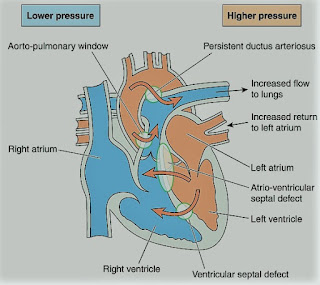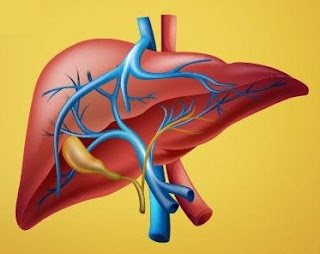Anesthesia for Electroconvulsive Therapy
Principle:
-The exact
mechanism of Electroconvulsive Therapy (ECT) is unknown. Electrical stimuli
(electroconvulsive shock) are usually administered until a therapeutic
generalized seizure is induced (30–60 sec. in duration).
-A good
therapeutic effect is generally not achieved until a total of 400–700 seizures
have been induced, in several sessions, over 2-3 weeks. Progressive short memory
loss often occurs with an increasing number of treatments.
Physiological Effects:
-Seizure
activity is characteristically associated with an “initial parasympathetic”
discharge characterized by bradycardia and increased secretions. Marked
bradycardia (<30 beats/min.) and even transient asystole (up to 6s) are
occasionally seen.
-This is
followed by “sustained sympathetic” discharge. Hypertension and tachycardia
that follow are typically sustained for several minutes.
-Transient
autonomic imbalance can produce arrhythmias and T-wave abnormalities on the
ECG. Cerebral blood flow and ICP, intragastric pressure, and intraocular
pressure all transiently increase.
Contraindications:
• Recent MI
(<3 months)
• Recent stroke
(usually <1 month)
• Intracranial
mass or increased ICP from any cause
• More relative
contraindications include:
- Angina
- Poorly
controlled heart failure
- Significant
pulmonary disease
-Bone
fractures, Severe osteoporosis
- Pregnancy
- Glaucoma and
retinal detachment.
Anesthetic Considerations:
-Amnesia is
required only for a brief period (1–5 min) from when the NMB is given to when
a therapeutic seizure has been successfully induced. The seizure itself usually
results in a brief period of anterograde amnesia, somnolence, and often
confusion. Consequently, only a short-acting induction agent is necessary.
-Increases in
seizure threshold are often observed with each subsequent ECT.
-Most induction
agents (Barbiturates, Benzodiazepines, and Propofol) have anticonvulsant
properties, small doses must be used. The seizure threshold is increased and
seizure duration is decreased by all of these agents.
--Sodium
pentothal (2–4 mg/kg) was the first induction agent used, it raises the seizure
threshold and decreases its duration.
--Methohexital
(0.5-1.0 mg/kg): has been the induction agent of choice (gold standard) because
it has very little effect on seizure duration and has a rapid onset and
recovery profile. Unfortunately, methohexital is no longer available.
--Benzodiazepines: raise the seizure
threshold and decrease its duration.
--Propofol
(1–1.5 mg/kg): but higher doses reduce seizure duration.
--Etomidate
(0.15-0.6 mg/kg): lacks anticonvulsant properties, increases seizure duration, and prolongs recovery.
--Ketamine
(1.5-2 mg/kg): lacks anticonvulsant properties, and increases seizure duration, but
is generally not used because it also increases the incidence of delayed
awakening, nausea, and ataxia and is also associated with hallucinations during
emergence.
-Short-acting
opioids: are not given alone because they do not consistently produce amnesia.
-Sevoflurane
(5%–8% for induction, followed by 1–2 MAC): is the only inhalational agent in
widespread use for induction in ECT, with comparable effects to intravenous
(IV) agents. It is preferred for patients not cooperative with IV access. It has
the advantage of attenuating uterine contractions following ECT and is used in
the third trimester of pregnancy.
-Induction agents in the descending
order of seizure duration after their use are:
[Etomidate >
Ketamine > Methohexital > Sevoflurane > Thiopental > Propofol]
-Induction agents in descending
order of seizure threshold reducing property are:
[Etomidate >
Ketamine > Methohexital > Thiopental > Propofol]
-Neuromuscular
blockade: required from the time of electrical stimulation until the end of the
seizure. A short-acting agent, such as succinylcholine (0.25–0.5 mg/kg), is
most often selected.
-Ventilation:
Controlled “mask ventilation” (with a backup plan of LMA if concerned about effective
ventilation), is required until spontaneous respirations resume. As ECT is
usually administered 3-times a week, repeated intubations may lead to airway
trauma and edema. Hyperventilation can increase seizure duration and is
routinely employed in some centers.
Monitoring:
-Routine
monitoring should be as with the use of any other general anesthetic.
-Seizure
activity is monitored by an unprocessed EEG. It can also be monitored in an
isolated limb: a tourniquet is inflated around one arm before injection of
succinylcholine, preventing entry of the NMB and allowing observation of
convulsive motor activity in that arm.
Precautions:
-Rubber bite
block: to avoid dental, tongue, and lips injury.
-Exaggerated
parasympathetic effects: should be treated with atropine. In fact,
premedication with glycopyrrolate is desirable both to prevent the profuse
secretions associated with seizures and to attenuate bradycardia.
-Sympathetic
manifestations: Nitroglycerin, Nifedipine, and α- and β-adrenergic blockers
have all been employed successfully for control. High doses of β-adrenergic
blockers (Esmolol, 200 mg), however, are reported to decrease seizure duration.
-Patients with
pacemakers: may safely undergo ECT treatments, but a method to convert the
pacemaker to a fixed mode, if necessary should be readily available.
































